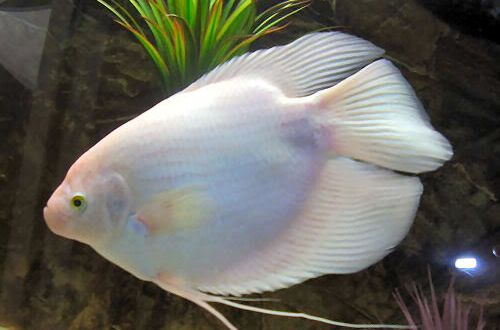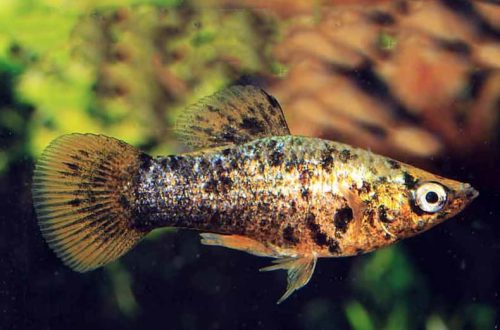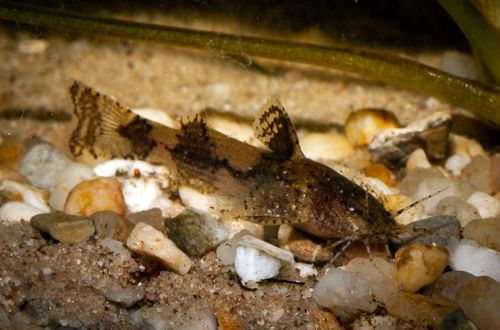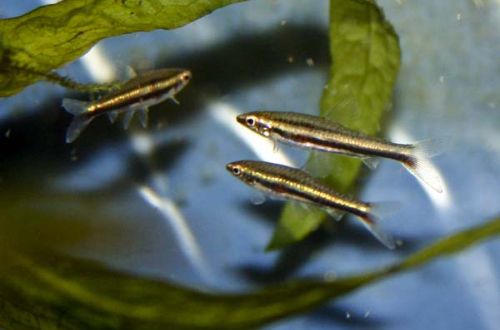
Giant Gourami
The Giant Gourami, scientific name Osphronemus goramy, belongs to the Osphronemidae family. The largest representative of the Labyrinths, reaching a length of 70 cm (!), However, at home, its dimensions rarely exceed 40 cm. This giant has a bit of charm, is unpretentious and undemanding to food, perfect for a large species aquarium.

Contents
Habitat
The original habitat was concentrated in the river systems of Southeast Asia, where the local population is an important food fish. In the same capacity, the Giant Gourami ended up in water bodies on other continents (South America, Australia).
In nature, they inhabit medium and large rivers, lakes, during the wet season they swim in flooded forests. They are also found in swampy lowlands, canals, brackish water reservoirs. Feeding on both plant and animal products, their diet consists of aquatic weeds, fish, frogs, earthworms, and sometimes dead animals.
Description
Large laterally compressed oval body. The dimensions are impressive – adults reach a length of 40 cm. At a young age, the head is flat and pointed, as they grow older, a large forehead resembling a “bump” and a massive jaw with large lips appear. As in other labyrinthine species, the ventral fins are transformed into filamentous processes with sensitive sensors.
Coloration changes with age, young fish have a body pattern consisting of 8–10 dark stripes on a silvery light background, yellow fins. Adult Giant Gourami fade gradually, becoming completely solid white, pinkish or gray.
In recent years, artificial coloring of gourami has become a hobby, the colors are added by injection, dye baths, but such methods are condemned in many developed countries, as irreparable harm is done to the fish. She becomes susceptible to various infections, her life span is noticeably reduced, some die immediately after the operation.
Food
Accepts all types of aquarium food, both dry industrial and meat, it’s just a matter of quantity. The fish are large and require appropriate portions of food. There is an important feature – if the fish is already purchased as an adult (and they live for a very long time), specify its usual diet, otherwise it may refuse unfamiliar food. For example, the fish initially ate only meat products (worms, small fish, insects, etc.), then it will no longer be possible to transfer it to dry food and the maintenance of the Giant Gourami will become quite costly. It is optimal to purchase a young individual and feed it in accordance with your capabilities, the fish is not whimsical, it will eat almost everything that you offer.
Maintenance and care
Fish are able to thrive in a wide range of conditions, so only two are key: enough space (large tank) and clean water. There are problems with the latter, the Giant Gourami produces a lot of waste, several productive filters and periodic water renewal by 25 – 50% once a week are able to cope with such a load. Other necessary equipment: lighting system, aerator, heater; care must be taken to securely fasten them. One of the few labyrinths that can tolerate the salinity of water at a concentration of 2 grams of salt per 10 liters of water, but no more.
Design is up to you, but subject to a few rules: large open spaces for swimming and several dense groups of fast-growing plants, because they will inevitably serve as additional food.
Social behavior
Feels great alone or in a male / female pair, young individuals often fight with each other, but tempers soften with age, however, adult males can still be intolerant of competitors, especially during spawning.
Their size and natural diet make it impossible to keep Giant Gourami with small fish, they will quickly become prey, so other large, calm and peaceful fish are preferred as neighbors, but if there is not enough space (the aquarium is cramped), skirmishes will inevitably begin.
Sexual differences
Males have longer and pointed dorsal and anal fins, a larger forehead, females have rounded fins opposite, larger lips.
Breeding / breeding
Theoretically, breeding is simple, fish form a pair, build nests from bubbles where fry develop, etc., but difficulties arise in the size of the tank, it must be very large, from 700 liters, because after the appearance of fry, the male becomes their guard and begins to attack even its female and it takes a lot of space for it to find a place to hide. Such a tank in full gear (soil, equipment) will weigh about a ton, and ceilings, floors in ordinary apartments are not designed for such loads.
Diseases
In a balanced aquarium, health problems do not arise, the main causes of ailments lie in the lack of nutrition and free space. Read more about symptoms and treatments in the Aquarium Fish Diseases section.





